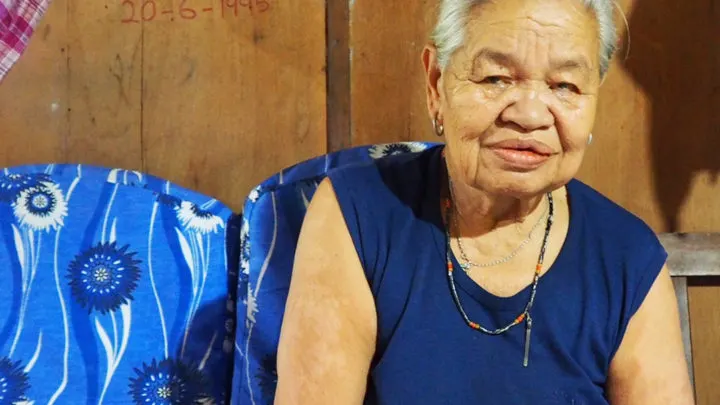Mengumbihing is from the Rungus tribe and has lived in the same longhouse in a small village in Sabah, Malaysian Borneo for all of her 88 years. These long wooden buildings house entire villages, enabling them to maintain a sense of community by continuing their tribal tradition of communal living.
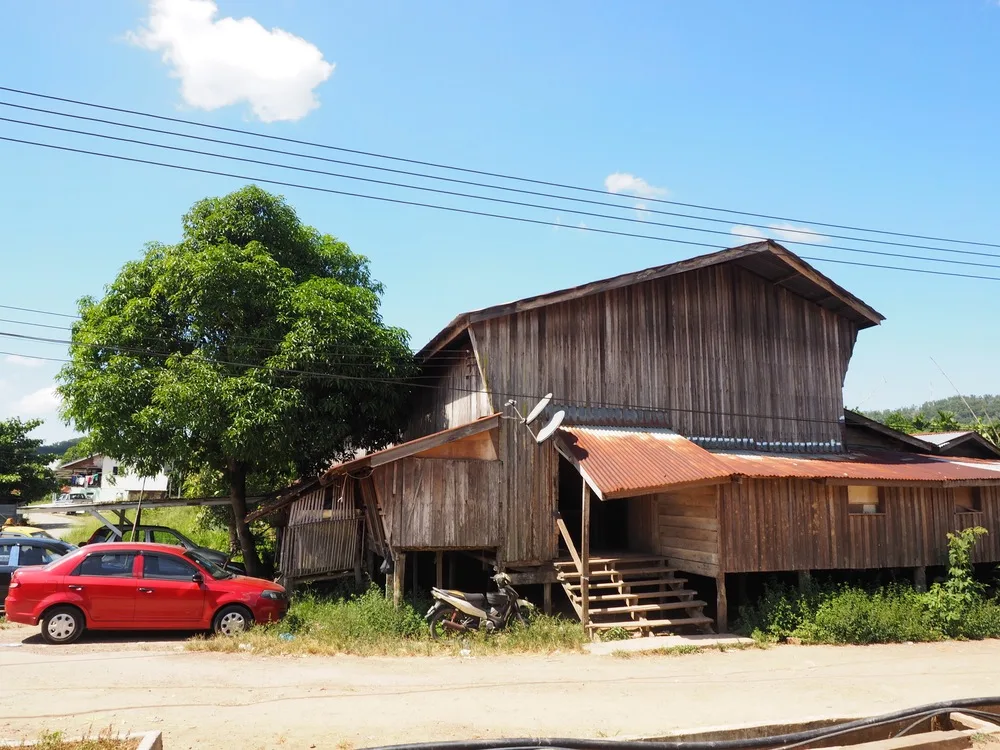
The traditional longhouse where 25 families live together
We spotted Mengumbihing staring out the window as we pulled up to the village, and she came to talk to us when we entered the longhouse. After exchanging smiles and a few words through our guide, she was kind enough to show us her family home.
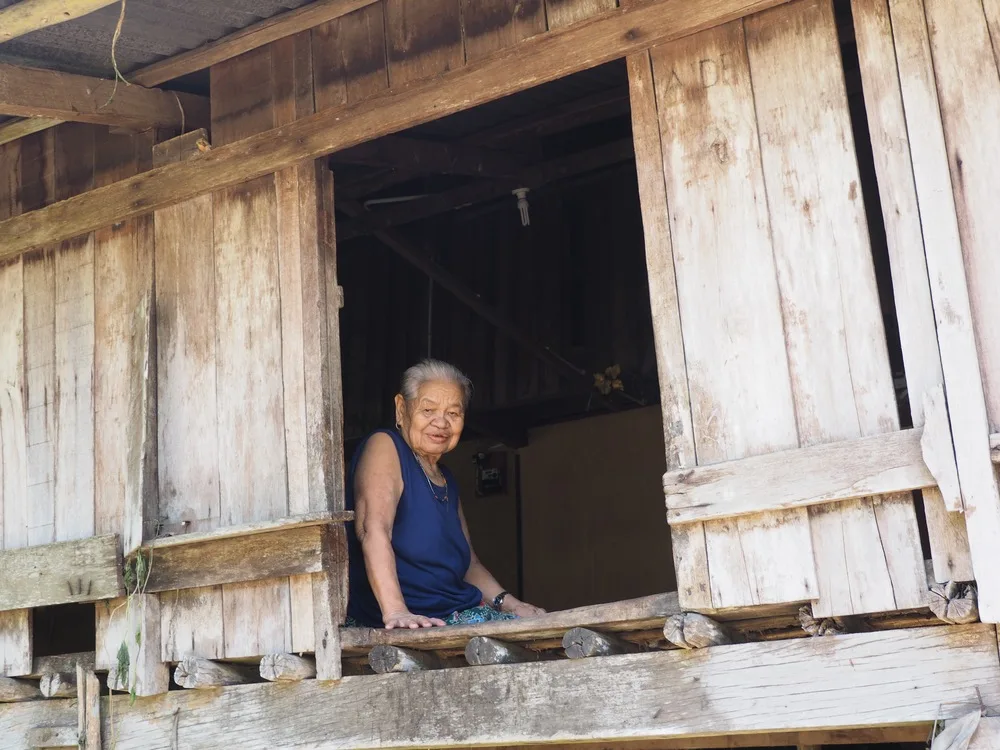
It is warm inside the longhouse, in the way that makes everyone move slowly. Chickens cluck below us, breaking the stillness. In the common area older villagers lay in hammocks, fanning themselves. A few young boys lay back on the floor playing video games. An older lady sits weaving coloured thread near a window, trying to catch the light breeze.
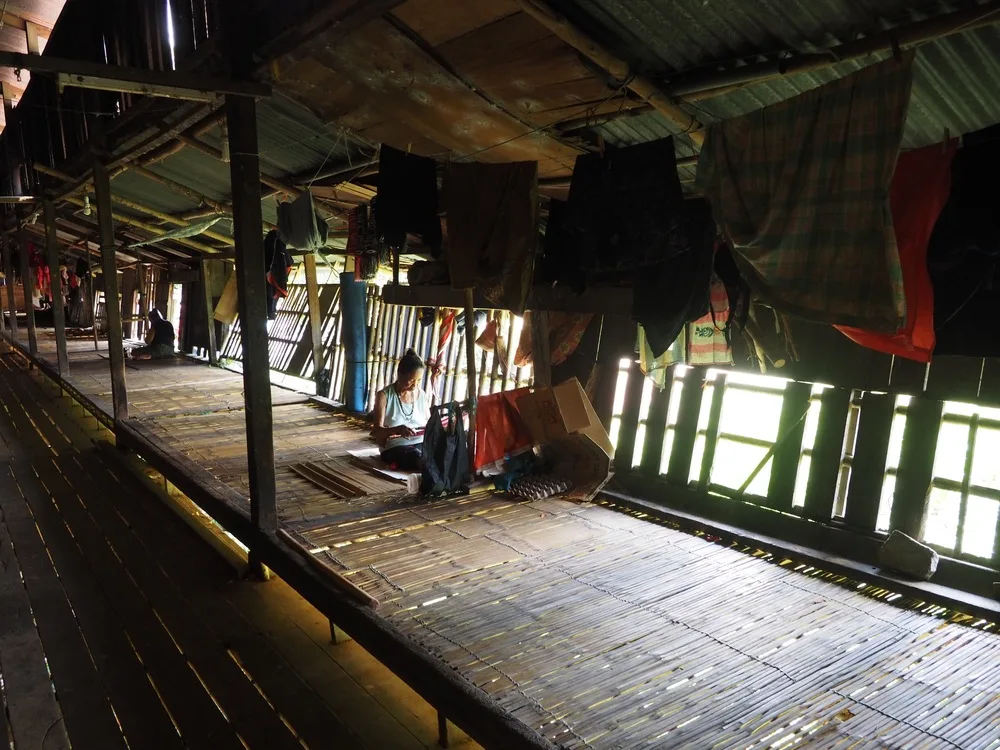
Through her doorway decorated with a ‘Merry Christmas’ sign I look into Mengumbihing’s living area. She proudly points out a photo of her late husband. The room is hot, there are no gaps in the flooring to let the air through as in older style longhouses, and no windows.
Mengumbihing’s six grandchildren live with her, although the boys sleep in the common area at night and her granddaughter sleeps upstairs as is the custom for single ladies. There are stairs leading up to a storage area and a bedroom for Mengumbihing’s grand-daughter.
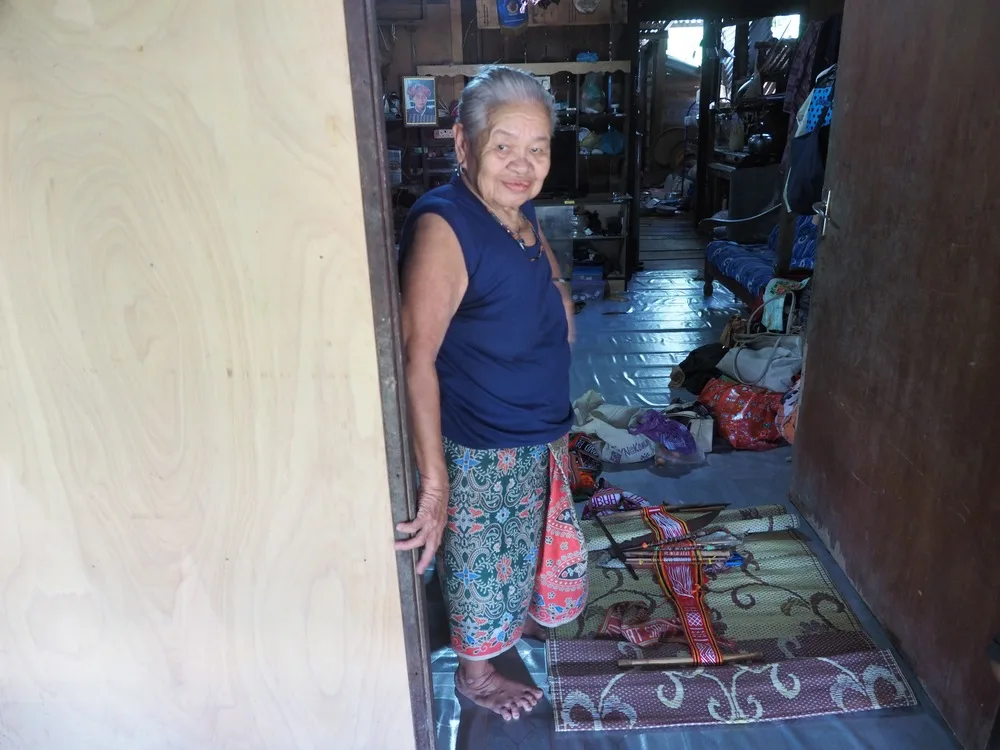
The living room opens into a larger and cooler room where there is a kitchen, bathroom, more storage and an elevated sleeping platform.
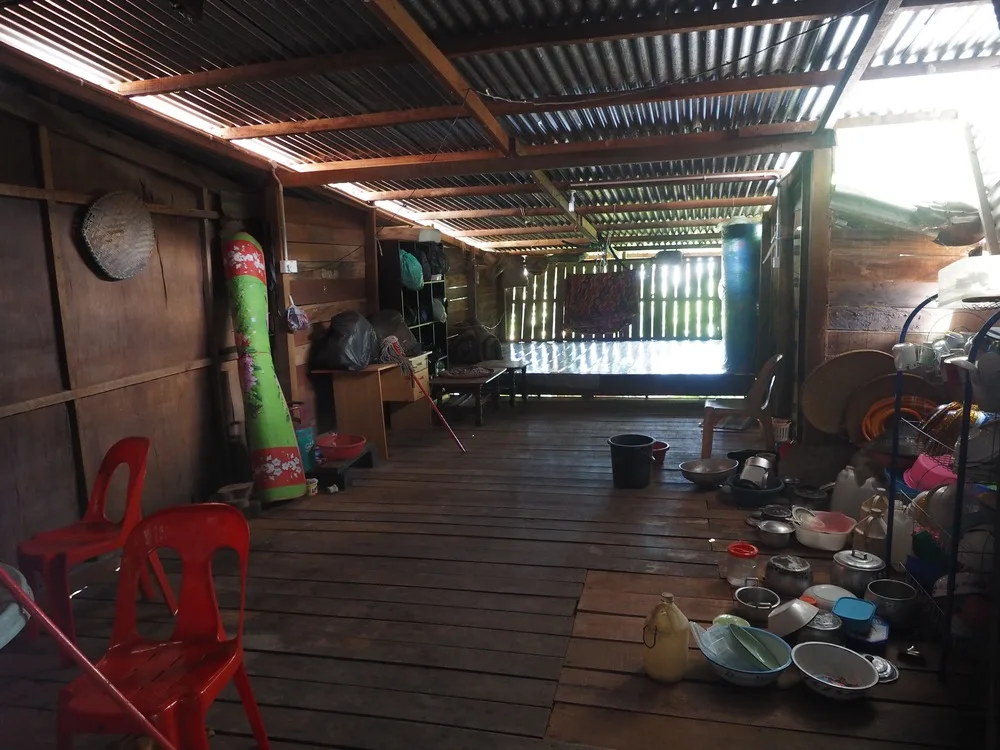
The large room out the back – for sleeping and cooking and just off to the right is a small bathroom
I ask Mengumbihing about living in the longhouse.
“The best thing about living in the longhouse is it is very good to stay here, living with other people, spending time with neighbours, sharing food with people,” she tells me through our guide, Sly.
“It can be quite hot but I have a fan and a small TV”

Mengumbihing spends her days weaving traditional inavol – the tribal designs and patterns that men wear – that can be sold to tourists in small shops around the district.
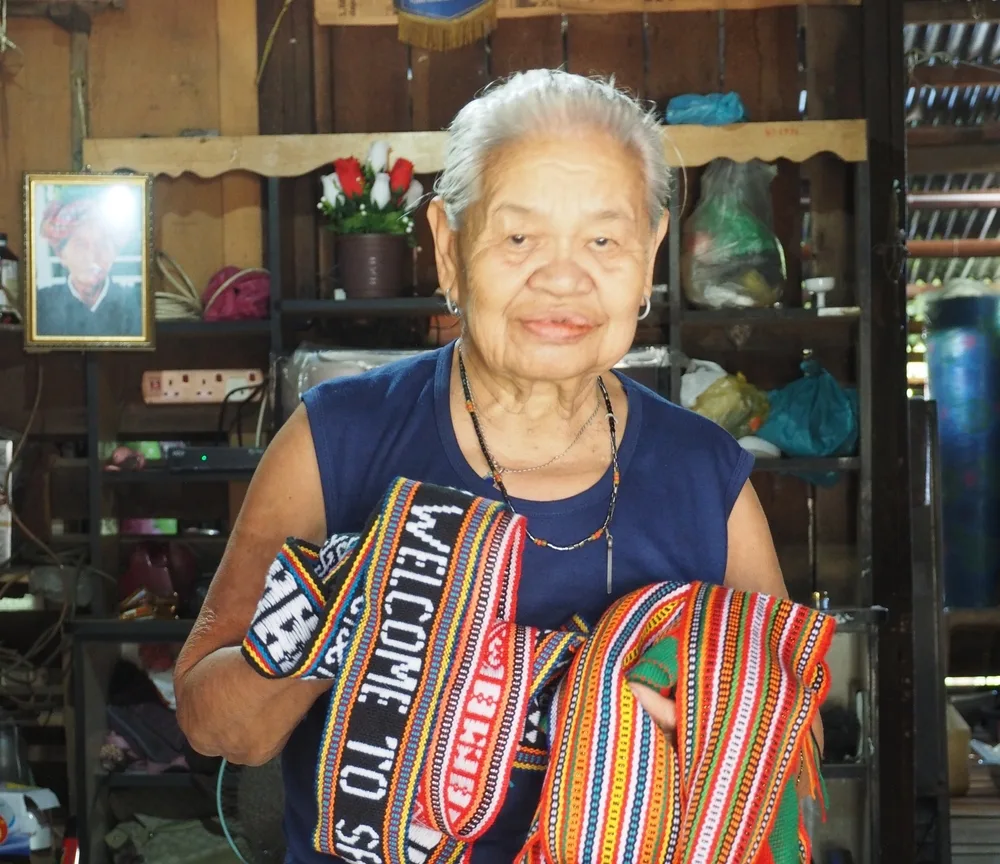
Longhouses are the traditional homes of the Rungus tribe, with up to 150 families living in individual rooms within the longhouse building. This way of living helps keep the tribe safe and working together as a community, under the leadership of a chief, and often if the village is big enough, his assistants. This longhouse is quite old with modern touches like electricity – which means it now has a tin roof that makes the building quite warm – and inside bathrooms. There are 25 families in this longhouse and it even has a general store in the middle.
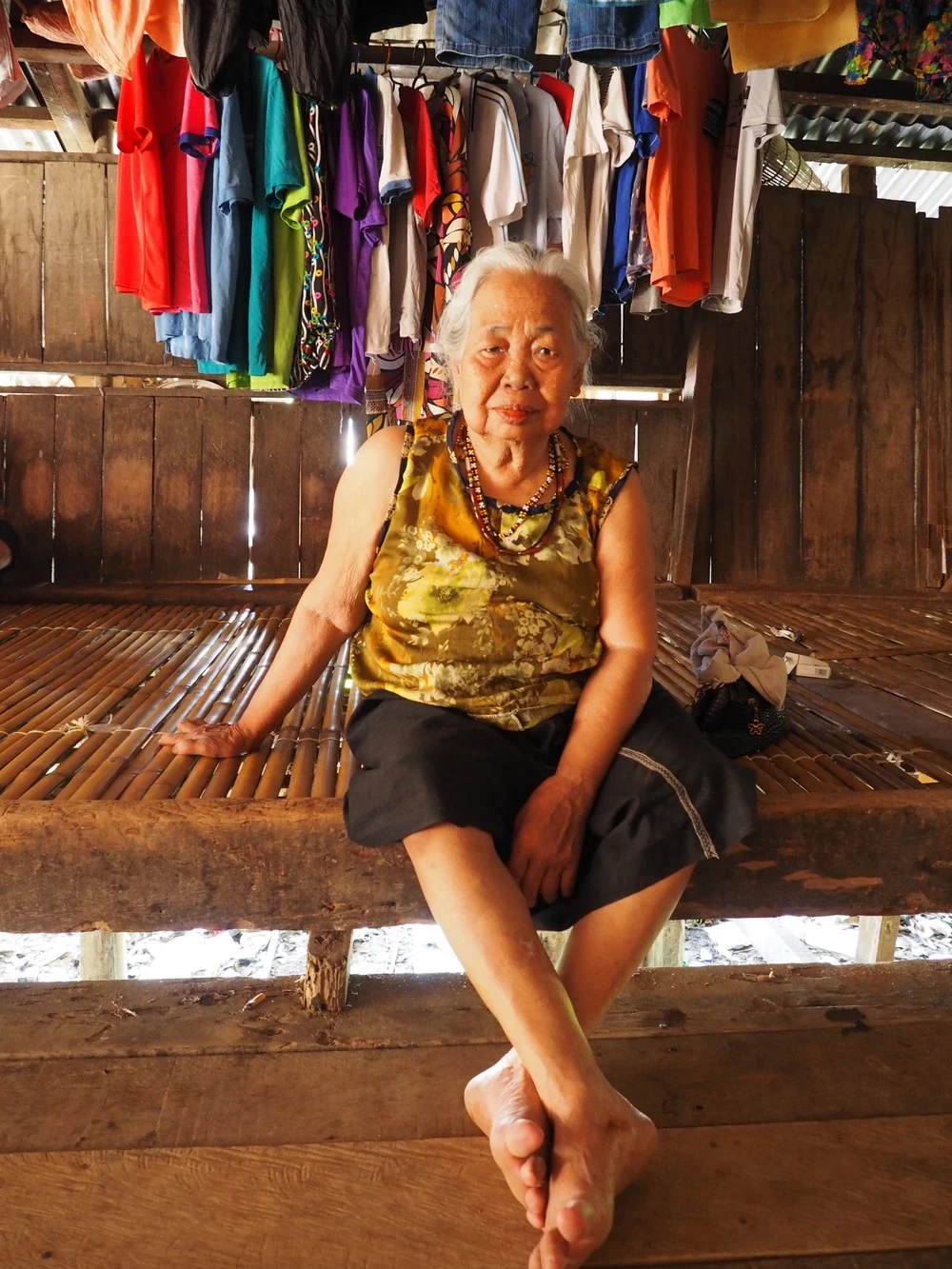
Lady resting in the longhouse common area
Longhouses are built from strong guava, or obah, wood. The internal walls are lined with tree bark or palm leaves and the floor with bamboo. Gaps are left between the bamboo and the wood that makes the external walls to let the breeze come through and allow the tribe to keep a lookout for any enemies that may be approaching.
Each family room has a kitchen and a living area. Single women sleep upstairs and fishing pots, gongs and rice are stored above. Generally the men will sleep outside the family rooms in the common area.
Back in the day the common room was used for everything from harvest celebrations and weddings, to a place where men slept. It was also where families hung their rice wine during events.
The Rungus are a farming tribe and built their longhouses near the river so they had easy access to water for washing and cleaning and drinking. They used the larger bamboo, called poring, to collect water, grew rice and livestock like chickens, pigs and water buffalo.
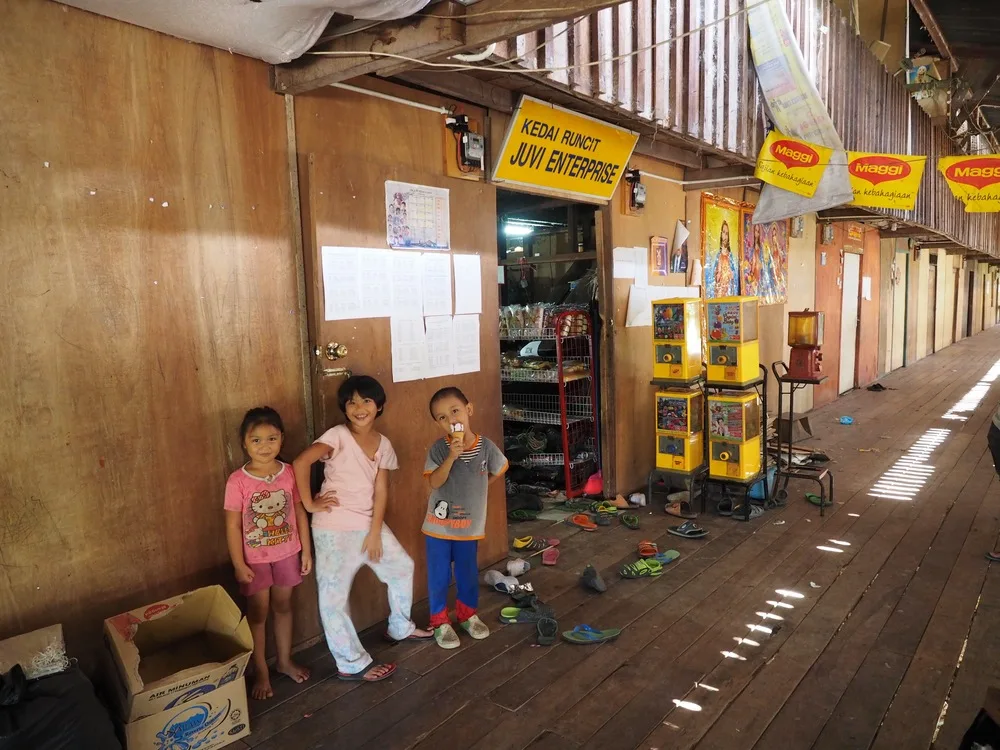
The longhouse general store
Some longhouses have been entirely modernised, however villages like this one continue to live in the traditional longhouse style.
Longhouses certainly create a strong sense of community and help older members of the village maintain their independence whilst being in constant contact with friends and neighbours.
“In the longhouse I feel not lonely,” said Mengumbihing with a smile, as she leaves us to start weaving with her friend. “This is where I belong.’

We travelled with Trek Finder Tours as guests of Sabah Tourism. And it was incredible. We can’t wait to get back to Borneo in a few weeks.

